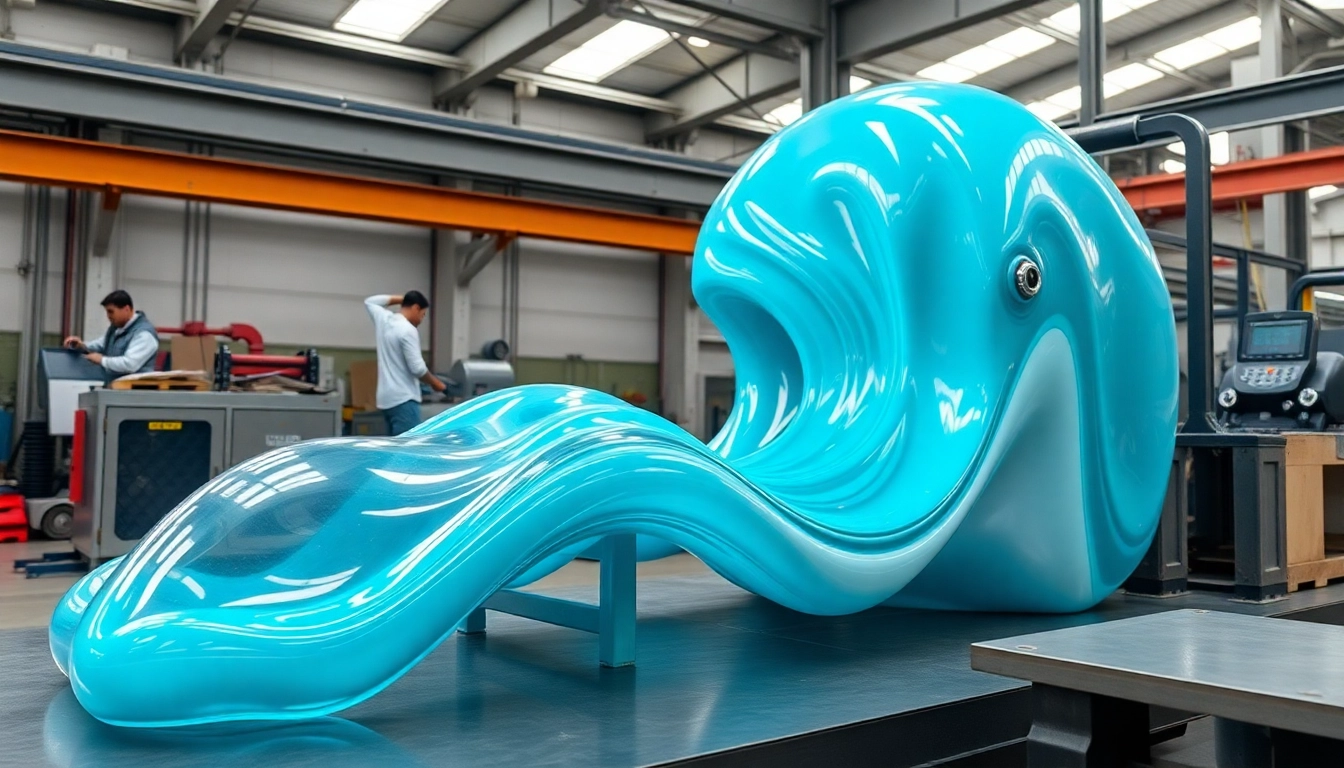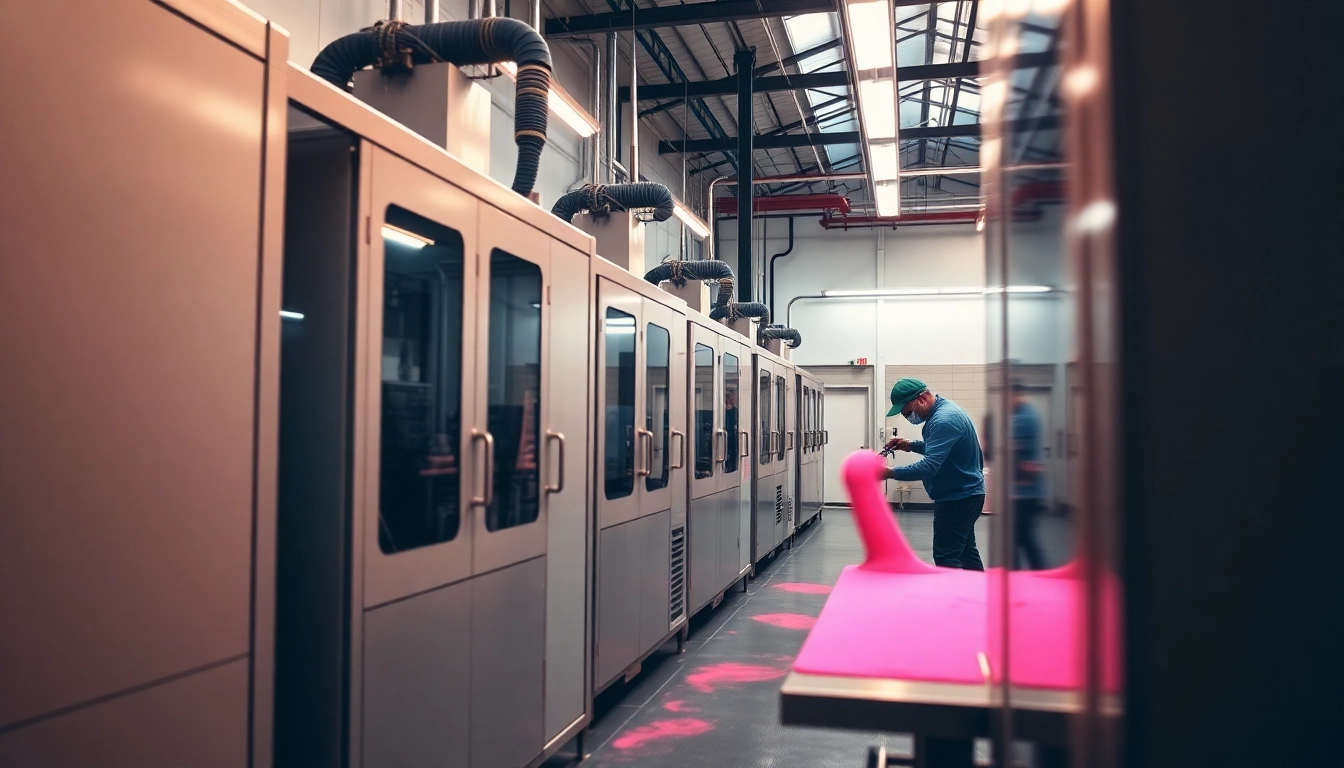Understanding Precision Die Cutting
Precision die cutting is a highly specialized process used in various industries to produce intricate shapes and designs from a wide range of materials. This manufacturing technique combines both art and technology, allowing for the creation of custom products with precision and speed. As industries evolve and demand increases for high-quality, cost-effective products, the importance of precision die cutting becomes more apparent. Companies are seeking ways to improve their output while maintaining quality, and precision die cutting offers a solution that meets these needs.
What is Precision Die Cutting?
Precision die cutting is the process of using a die to cut materials into specific shapes with high accuracy. A die, typically made from steel or another durable material, is designed to the exact specifications required by the manufacturer. The die is then used in conjunction with a mechanical press to cut through various materials, including paper, plastic, rubber, and metal. This method allows for the production of items like gaskets, labels, custom packaging, and more, all while ensuring that each cut retains the same size and shape as the original design.
Key Benefits of Precision Die Cutting
- Accuracy: One of the primary advantages of precision die cutting is its ability to produce highly accurate and consistent cuts. This is essential for industries that require parts to fit together perfectly, such as automotive or aerospace manufacturing.
- Reduced Waste: Because the process allows for precise measurements and cutting, material waste is minimized. This translates into cost savings and more efficient use of resources.
- Speed and Efficiency: Once a die is created, production can be scaled quickly without the need for extensive setup time. This leads to faster turnaround times for projects.
- Versatility: Precision die cutting can be applied to various materials and industries, making it a versatile choice for manufacturers. It can be used for simple shapes as well as complex designs.
- Cost-Effectiveness: For large volume productions, precision die cutting can be more cost-effective than other cutting methods like laser cutting or manual cutting in terms of both labor and time.
Common Applications in Industry
The applications of precision die cutting are vast, extending across many industries. Here are some of the most common uses:
- Packaging Industry: Custom die-cut packaging is essential for ensuring that products are securely packaged while also standing out on the shelf.
- Automotive Industry: Precision die cutting is used to manufacture gaskets, seals, and insulation materials essential for vehicle performance.
- Medical Field: In medical applications, die cutting is critical for producing components like seals, gaskets, and sterile packaging tailored to stringent regulatory standards.
- Electronics: Custom cut foams and plastic parts are essential for protecting sensitive components in electronic devices.
The Process of Precision Die Cutting
Step-by-Step Breakdown of the Process
The precision die cutting process can be broken down into several key steps:
- Design and Development: The process begins with the creation of a design using CAD software. This design must consider the material properties, required tolerances, and end-use of the product.
- Die Creation: Based on the design, a die is manufactured. This can involve traditional machining or modern techniques like computer numerical control (CNC).
- Material Selection: Selecting the right material for die cutting is crucial. Factors such as thickness, flexibility, and durability need to be assessed to ensure the best outcome.
- Production Setup: The cutting machine is then set up with the die, ensuring everything is aligned for accurate cuts.
- Cutting the Material: The material is placed in the machine, and the die presses down to cut the shapes. Precision controls ensure the cuts are made consistently.
- Quality Inspection: After cutting, parts undergo quality checks to ensure they meet specified tolerances before moving to the next stage of production.
Materials Used in Precision Die Cutting
Precision die cutting can be performed on a variety of materials, including:
- Paper and Cardstock: Commonly used for packaging, labels, and promotional materials.
- Plastics: Used for a range of applications from packaging to protective components in electronics.
- Foams: Often used in medical and automotive applications for cushioning and insulation.
- Metals: Thin sheets of metal can also be die cut for components in manufacturing and assembly.
Quality Control Measures for Precision Cutting
Quality control is essential in precision die cutting to ensure that each piece meets specifications. Key measures include:
- Tolerance Checks: Regular checks are performed to assess the tolerance levels of cut parts, ensuring they match the design specifications.
- Automated Inspection: Utilizing advanced technology like optical inspection systems can help detect defects or variations in size.
- Feedback Loops: Implementing a feedback system where operators can report issues and suggest improvements helps maintain quality standards.
Choosing the Right Die Cutting Method
Flatbed vs. Rotary Die Cutting
When considering precision die cutting, manufacturers often face a choice between flatbed and rotary die cutting methods:
- Flatbed Die Cutting: This method uses a flat die that presses onto the material. It’s versatile and ideal for large sheets and various material thicknesses.
- Rotary Die Cutting: Involves cylindrical dies that cut in a continuous motion, making it highly efficient for high-volume runs of smaller parts.
The choice between these methods often hinges on production volume, material types, and the complexity of the die design.
When to Use Laser Die Cutting
Laser die cutting is another cutting method that offers specific advantages. It is especially useful for:
- Complex Designs: Laser cutting enables intricate details that may be difficult to achieve with traditional die cutting.
- Small Production Runs: Ideal for smaller quantities since there is no need for die creation, thus reducing setup costs.
- Variety of Materials: Laser cutting can handle a wide range of materials, including thin metals and thick plastics, without the risk of material deformation.
Cost Considerations in Die Cutting
Understanding the costs associated with precision die cutting is vital for making informed manufacturing decisions. Some factors to consider include:
- Die Costs: The creation of a custom die can be a significant upfront expense, impacting initial production runs.
- Material Costs: The choice of materials affects overall production costs, with some materials being more economical than others.
- Production Volume: Higher volumes can reduce per-unit costs, making die cutting a cost-effective solution for large-scale projects.
Optimizing Precision Die Cutting in Your Workflow
Tips for Streamlining Production
To enhance the efficiency of precision die cutting, consider the following strategies:
- Plan Ahead: Assess your designs and production needs in advance to minimize changes during processing.
- Invest in Technology: Utilize advanced cutting machines and software to improve precision and reduce waste.
- Regular Maintenance: Keeping die cutting equipment regularly maintained ensures high performance and reduces downtime.
Enhancing Design for Die-Cutting Efficiency
The design phase is critical for successful die cutting. Here are tips to enhance design efficiency:
- Simplify Shapes: Where possible, aim for simpler designs that require fewer cuts, reducing production complexity and time.
- Use Nesting Software: Nesting optimization software can maximize material usage by arranging cuts efficiently.
- Consider Material Properties: Design considering the limitations of the materials will help avoid issues during cutting.
Maximizing Material Utilization
Efficient material use is key to cost savings in die cutting. Consider the following methods:
- Nesting Algorithms: Use technology to arrange parts on material sheets to minimize waste.
- Recycling Scraps: Establish systems for collecting and recycling unused material to reduce overall waste.
- Optimize Die Designs: Work closely with die manufacturers to refine designs that yield maximum parts per sheet.
Future Trends in Precision Die Cutting
Technological Advancements Shaping the Industry
The precision die cutting industry is continually evolving, driven by advancements in technology:
- Smart Automation: The integration of AI and automation technologies in die cutting processes enhances precision and reduces human error.
- 3D Printing Integration: Combining traditional die cutting with 3D printing could allow for innovative manufacturing solutions.
- Data Analytics: Leveraging data analytics for process improvement allows businesses to make data-driven decisions for enhancements in production.
Green Practices in Die Cutting
As sustainability becomes a crucial aspect of all manufacturing processes, die cutting is not left behind:
- Eco-friendly Materials: Many manufacturers are now opting for sustainable materials that reduce environmental impact.
- Energy Efficient Machines: Investing in energy-efficient cutting machines helps reduce the overall carbon footprint of manufacturing operations.
- Waste Reduction Initiatives: Implementing procedures that focus on recycling and repurposing of materials aligns manufacturing with green practices.
Customer-Centric Innovations for Die Cutting Services
As competition increases, customer satisfaction becomes vital in retaining business. Innovations in customer service include:
- Custom Solutions: Offering tailor-made solutions based on customer feedback can lead to improved customer loyalty.
- Rapid Prototyping: Allowing customers to see prototypes quickly can facilitate faster decision-making and production processes.
- Enhanced Communication: Implementing customer portals for tracking orders and real-time communication can improve overall customer experience.


